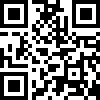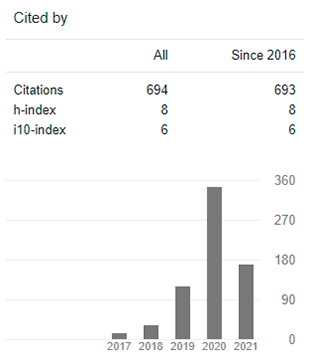The caregiver-child bond in autism cases
DOI:
https://doi.org/10.29394/Scientific.issn.2542-2987.2020.5.E.8.165-184Keywords:
children, child development, mother, father, parent roleAbstract
Autistic spectrum (ASD) is a neurodevelopmental disorder characterized by difficulties in socialization, empathy, verbal and nonverbal communication, repetitive and stereotyped behaviors and interests. Although the presence of caregivers who are sensitive to their needs is essential in all children, this task is difficult in children with ASD due to the particularities of the disorder. Therefore, the objective of the present study was to explore the characteristics of the interaction of four caregivers with their children with ASD in order to provide recommendations that strengthen this bond, so as to promote the development of children. An exploratory and descriptive qualitative approach methodology was used. The tools used were a sociodemographic data sheet and the MBPQS test to obtain an appreciation of the sensitivity of the participating caregivers in the care of their children with ASD. The results showed that there were manifestations of sensitive care that needed to be strengthened. Based on these findings, recommendations were made to caregivers, with guidelines to strengthen the bond and development of children.
Downloads
References
Alcantud, F., & Alonso, Y. (2015a,b). Trastornos del Espectro Autista. En Moreno Osella, E (Ed) Necesidades Educativas Especiales: Una mirada diferente. ISBN: 978-84-606-6197-9. Córdoba, España: Fedune.
American Psychiatric Association (2014a,b,c). DSM-5. Manual Diagnóstico y Estadístico de los Trastornos Mentales. 5ta Edición, ISBN: 9788491101727. Buenos Aires, Argentina: Editorial Médica Panamericana.
Bowlby, J. (1988a,b). Una base segura. Buenos Aires, Argentina: Ediciones Paidós.
Briceño, V. (2018). Trastornos del Espectro Autista en Educación Inicial: Experiencia Educativa. Revista Scientific, 3(8), 218-233, e-ISSN: 2542-2987. Recuperado de: https://doi.org/10.29394/Scientific.issn.2542-2987.2018.3.8.11.218-233
Dekkers, L., Groot, N., Díaz, E., Andrade, I., & Delfos, M. (2015). Prevalence of Autism Spectrum Disorders in Ecuador: A Pilot Study in Quito. Journal of Autism and Developmental Disorders, 45, 4165-4173, e-ISSN: 1573-3432. Recovered from: https://doi.org/10.1007/s10803-015-2559-6
Flórez, J. (2000). El síndrome del cuidador. Jano: Medicina y humanidades, (1345), 46-50, ISSN: 0210-220X. España: Doyma.
Kahane, L., & El-Tahir, M. (2015). Attachment behavior in children with Autistic Spectrum Disorders. Advances in Mental Health and Intellectual Disabilities, 9(2), 79-89, e-ISSN: 2044-1282. Recovered from: https://doi.org/10.1108/AMHID-06-2014-0026
López, C., & Larrea, M. (2017a,b,c). Autismo en Ecuador: un Grupo Social en Espera de Atención. Revista Ecuatoriana de Neurología, 26(3), 203-214, e-ISSN: 1019-8113. Recuperado de: http://revecuatneurol.com/magazine_issue_article/autismo-ecuador-grupo-social-espera-atencion-autism-ecuador-social-group-waiting-attention/
Maenner, M., Shaw, K., Baio, J., Washington, A., Patrick, M., DiRienzo, M., … Dietz, P. (2020). Prevalence of Autism Spectrum Disorder Among Children Aged 8 Years - Autism and Developmental Disabilities Monitoring Network, 11 Sites, United States, 2016. MMWR: Surveillance Summaries, 69(SS-4), 1-12, e-ISSN: 1545-8636. Recovered from: http://dx.doi.org/10.15585/mmwr.ss6904a1
Ministerio de Salud Pública del Ecuador (2017). Trastornos del Espectro Autista en niños y adolescentes: detección, diagnóstico, tratamiento, rehabilitación y seguimiento. Quito: Ministerio de Salud Pública, Dirección Nacional de Normatización-MSP.
Posada, G., Kaloustian, G., Richmond, M., & Moreno, A. (2007a,b,c). Maternal secure base support and preschoolers' secure base behavior in natural environments. Attachment & Human Development, 9(4), 393-411, e-ISSN: 1461-6734. Recovered from: https://doi.org/10.1080/14616730701712316
Rojas, A. (2017). Creencias erróneas y cumplimiento del cuidador en padres de niños con autismo de educación especial de Lima Sur. Tesis. Lima, Perú: Universidad Autónoma del Perú. Recuperado de: http://repositorio.autonoma.edu.pe/bitstream/AUTONOMA/367/1 /ROJAS%20HUAYTA%2C%20ANDREA%20LUCERO.pdf
Ruggieri, V. (2014a,b). La amígdala y su relación con el autismo, los trastornos conductuales y otros trastornos del neurodesarrollo. Revista de Neurología, 58(Supl. 1), S137-S148, e-ISSN: 1576-6578. Recuperado de: https://doi.org/10.33588/rn.58S01.2013571
Salinas-Quiroz, F., & Posada, G. (2015). MBQS: Método de evaluación para intervenciones en apego dirigidas a primera infancia. Revista Latinoamericana de Ciencias Sociales, Niñez y Juventud, 13(2), 1051-1063, e-ISSN: 2027-7679. Recuperado de: http://revistaumanizales.cinde.org.co/rlcsnj/index.php/Revista-Latinoamericana/article/view/1986
World Health Organization (2001). Clasificación multiaxial de los trastornos psiquiátricos en niños y adolescentes: clasificación de la CIE-10 de los trastornos mentales y del comportamiento en niños y adolescentes. ISBN: 8479034912. Madrid, España: Editorial Panamericana.
Downloads
Published
How to Cite
Issue
Section
License
The content of the journals of this site, are under a Creative Commons Attribution-Noncommercial-Share Alike 4.0 International License.













